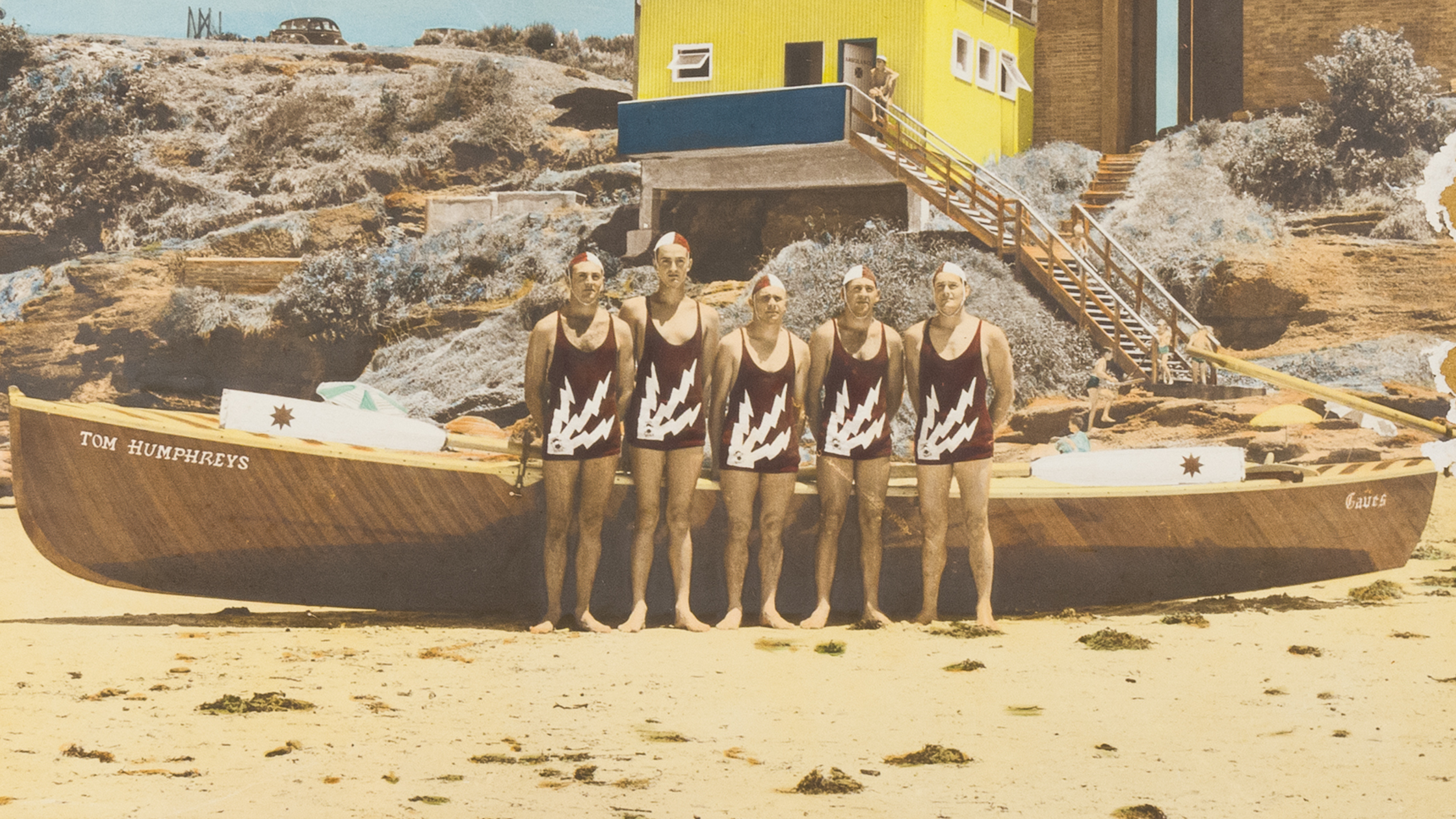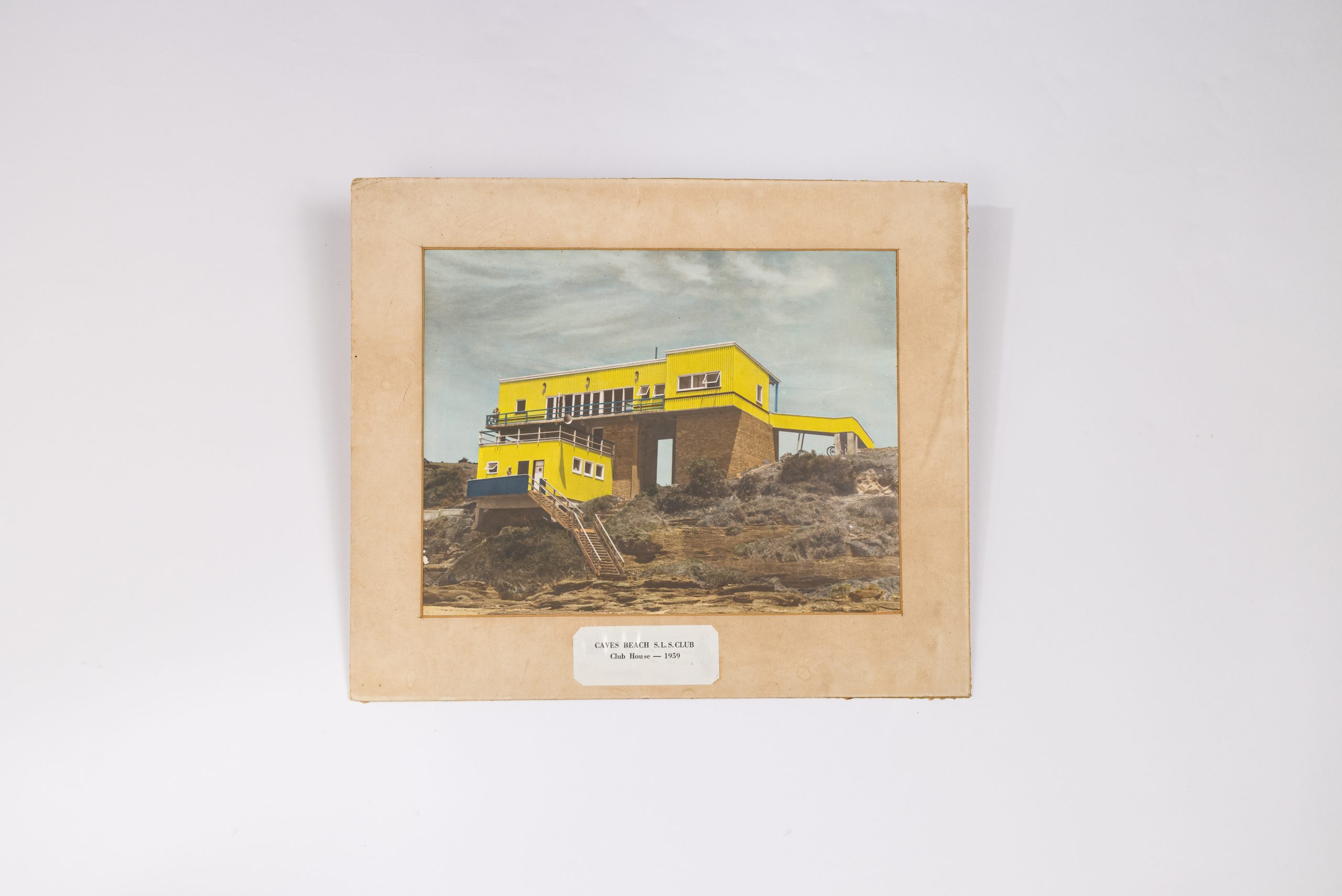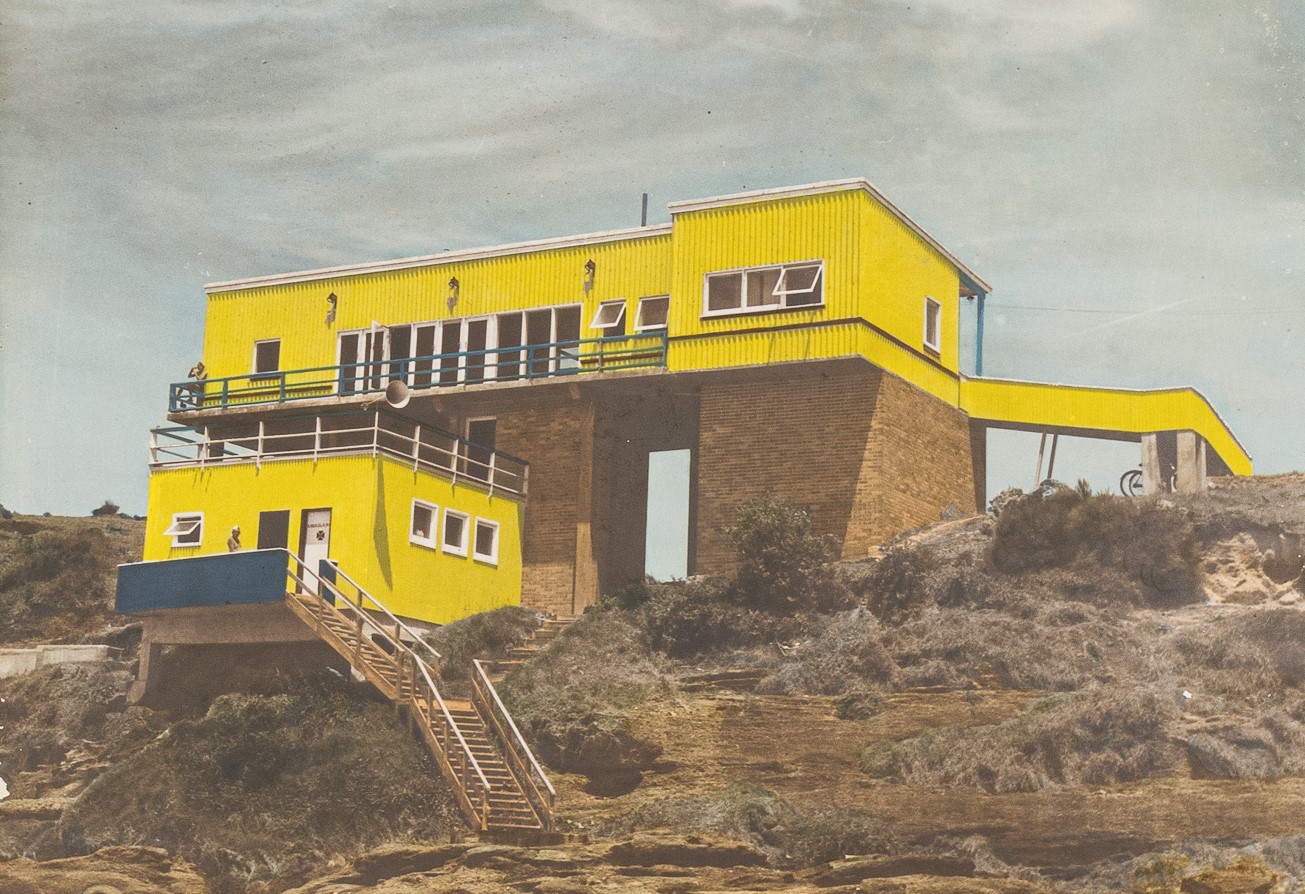Standing on the Beach
Caves Beach Surf Club Photographed in 1959
With slightly sandy shoes, a professional photographer returned to his studio one day in 1959 and developed a roll of film. It was these two photographs that stood out among the images he had captured that day, which were suitable for the commission he had received from the Swansea-Caves Beach Surf Lifesaving Club. After printing the images, he hand-coloured them, finding just the right shade of bold, canary yellow he had seen on the clubhouse walls that day. In full sunshine, with not a cloud to be seen, he had stood on the sand and waited for the five surfers in their maroon club uniforms to assemble in front of the timber boat named ‘Tom Humphreys’.
It was named after local boat builder Tom Humphreys (1883-1957), after he drowned, while fishing, in an accident that wrecked his boat off Caves Beach. The boat was a ‘tuck stern’ boat, a revolutionary design which Tom had famously developed as the fastest possible surfboat for the Swansea-Caves Beach and Swansea-Belmont clubs. After being ridiculed at the Australian Surf Championships in 1945-6, Tom’s once-controversial design now remains the standard for surfboats around the world.
Situated on the peninsula between Lake Macquarie and the Pacific Ocean, Caves Beach has been a popular swimming and surfing spot since the early twentieth century. Originally known by settlers as The Plains, the Awabakal traditionally visited the area for fishing, collecting grasstree resin for spearmaking, and to use the local fine-grained quartzite for making tools.
The utilitarian building pictured in the photographs, perched on the cliff and nestled into the rocky outcrop, was built in 1956 and was the third club house built there. Its three levels provided spectacular views of the beach and ocean beyond, but it was demolished in 1978 to make way for a new club house, still in use today.






